Toyota Corolla Vs Hyundai Elantra Comparison

Last year in the US, the Corolla outsold the Elantra at a rate of over 2 to 1.
The Corolla is a global sales juggernaut: in 2016, Toyota figured over 44 million Corollas had been sold around the world over its lifetime. By our estimates, that puts the total at around 50 million by now.
All that is to say Toyota’s darling is the target for Hyundai’s latest Elantra. We’d say the Honda Civic is—what with it being the segment sales leader in both Canada and the US—but it’s in the process of being replaced. Besides, last time the Civic and Corolla faced off, we gave the nod to the ‘Rolla. Now it must defend its crown.
Interior and Cargo Space
Corolla: Of these two, the Corolla’s interior is certainly the simpler of the two. That’s not a bad thing: it’s a cinch to figure out where everything is. The dashboard is also pleasantly soft to the touch—overall, the Toyota’s interior trim is a more consistent quality. Ergonomically it’s sound, though we still find the USB port hidden on the underside of the dash a case of function following form.
Get a Quote on a New Toyota Corolla or Hyundai ElantraThe cloth-covered seats may look flat, but prove comfortable and supportive once they’ve got butts in ’em. Front headroom is an okay 38.0 inches (965 mm) with the moonroof, while legroom is a very ample 42.3 inches (1,074 mm). The Corolla’s second row is noticeably tighter than the Elantra’s, however. An inch or so of headroom isn’t a big deal, but 34.8 inches (884 mm) of legroom is over 3 inches (80 mm) shy of the Elantra. The rear bench is also nearly 4 inches (99 mm) narrower than the Elantra: 51.7 inches (1,313 mm) plays 55.6 inches (1,412 mm).
The Corolla’s trunk will swallow 13.1 cubic feet (371 L). Helpfully, the opening is wide and the load lip low.
Elantra: The Elantra has a definite big-car influence to its interior design. A trio of chrome bars pull double duty, hiding the air vents as well as emphasizing the width of the space. An attractive dual-tone color scheme visually separates the driver too, lending the Elantra a cockpit-like feel. It’s an ambitious design, which might explain why material quality varies more here than in the Corolla. Knurled dials and wool-like door panels intermingle with brittle plastic around the center console and comprising the odd passenger-side grab handle. It serves as a reminder this is still a mainstream compact.
SEE ALSO: 2021 Hyundai Elantra Review: Going Nitpicking, or at Least Trying ToYou get leather seating in the Elantra, and its front thrones prove just as comfortable as the ones in the Corolla—managing editor Kshitij calls them more supportive. In every measurable dimension the Hyundai out-stretches the Toyota, except on front legroom, where they tie exactly, at 42.3 inches (1,074 mm). Headroom is 38.9 inches (989 mm) up front and 37.3 inches (947 mm) in the rear. Second-row legroom is a hair under 38.0 inches (964 mm).
Pop the Elantra’s trunk and you’ll find 14.2 cubic feet (402 L) of storage space. The opening is more tapered than the Corolla’s, however.
Bottom Line: Both of these compact sedans are so far removed from the “penalty box” stereotype of old.They’re both spacious, though the Elantra is more so, especially in width and in the rear. The Corolla’s simpler interior has a more consistent quality level than the Elantra, but that’s not enough to make up for the tight rear quarters. First win goes to Hyundai.
Tech and Features
Corolla: Oh, Entune. Toyota’s infotainment system remains as uninspiring as ever, with dated graphics and sluggish responses. Its saving graces is standard Apple CarPlay and Android Auto support, even on the base L model. Hook your phone up and use the 8.0-inch touchscreen for that instead. We noticed the screen was more responsive when mirroring Apple devices versus Android, as well.
SEE ALSO: 2021 Toyota Corolla L Review: Honest WorkThe Corolla lacks the Elantra’s whiz-bang digital instrument cluster, but its analog dials are clear and easy to read—not to mention preferable for a manual transmission-equipped car. The small info screen to the right of the speedo provides a quick snapshot into important details, too.
Neither of us had any notes about the Corolla’s sound system; it’s fine. We both agree Toyota’s rev-matching intelligent shift assist is a welcome feature, however, making driving stick that much more approachable to newcomers.
Elantra: The Hyundai holds the quantity and quality advantage over the Toyota in infotainment terms. The pair of 10.25-inch screens not only look better than the single panel in the Corolla, but Hyundai’s latest UI is also slick. That being said, there are a few weird hang-ups with the system, like having to dive deep into the central screen’s sub-menus to change the instrument panel display theme. Physical buttons below the screen make it easier to flit between main menus.
The digital instrument panel is easy to read, and the animated flourishes between driving modes are a welcome touch.
Kshitij pulls up the Elantra for its lack of USB-C ports, but it’s worth pointing out the Corolla omits them as well. Both cars essentially force users to plop their wired-up phones on wireless charging pads too, which makes it redundant. The Elantra has the slightly better sound system in this match-up, as well.
Bottom Line: There’s no two ways about it: the Elantra offers more technology to compact car buyers. A flashy twin-screen setup was the exclusive reserve of luxury cars only a few years ago. This one is user-friendly too, solidifying another category win for the angular Elantra.
Powertrain, Driving Feel, and Fuel Economy
Corolla: This particular Corolla tester is the rare SE Apex Edition, a limited-run model meant to give the ‘Rolla a bit more edge. Rarer still is the six-speed manual version here: only 50 came to Canada for 2021, making it more likely you’ll spot multiple Supras than another three-pedal Apex out on the road.
Checking the Apex box doesn’t add any more power: like most models, this Corolla packs the 169-horsepower, 2.0-liter four-cylinder. It’s a good engine, with a strong mid-range that belies a relatively high (4400 rpm) and modest (151 lb-ft) torque peak. The clutch pedal action is consistent, though the spacing of the other two pedals makes it tricky to heel-toe. We’d also prefer a shorter throw for the stick-shift.
The dropped suspension and lower-profile tires make the Corolla a blast on highway on-ramps. It corners without body roll, and clings to the road with tenacity. The steering is still light on weight and feedback, but find a smooth sequence of corners and the Corolla is genuinely fun.
You won’t like it once the Corolla sniffs out a bump or two, though. Despite its humble origins, the Apex Edition is the stiffest-riding car I’ve driven in a year. There’s no compliance, just harsh vibration across any stretch of road with a discernible texture. “I remember transporting a rally car for over 400 miles,” Kshitij reminisces, “this felt pretty close.”
The regular Corolla SE is the most fuel-efficient 2.0-equipped Corolla you can buy, scoring 31 mpg city and 40 mpg highway for a combined 34 mpg average. Canadian equivalents are 7.6, 5.8, and 6.7 L/100 km. Opting for the six-speed manual drops the numbers to 29, 36, and 32 mpg (8.2, 6.5, 7.4 L/100 km), respectively. The SE’s pugnacious bodykit dings it further, dropping 1 mpg in the city and combined.
Elantra: Despite giving up over 20 hp to the Corolla, and running a continuously-variable transmission, the Elantra never feels particularly slow. The CVT can handle a wide range of ratios, allowing for smooth take-offs from stops and a minimum of the typical drone we associate with this type of transmission. Where the Elantra’s 147 horsepower starts to feel a little strained is when attempting highway passes.
The Elantra’s suspension setup prioritizes everyday comfort. In the city it glides over rough patches, rarely transmitting surface-level harshness to the cabin. Even with the torsion-beam rear suspension, it never embarrasses itself on backroads, though it lacks the feedback and sense of enthusiasm found in the Corolla.
Our top-trim tester is called Limited in the US, and Ultimate in Canada. The EPA rates it at 31 mpg city, 41 mpg highway, for a 35 mpg combined score. NRCAN’s numbers 7.1, 5.5, and 6.4 L/100 km, respectively. That’s slightly better than even the CVT-equipped Corolla could manage.
Bottom Line: We have two distinct personalities on test here. The Corolla subscribes to the old-school approach that stiffness equals sportiness. In most scenarios, it’s simply too much. If this is a taste of what a track mode might be like on the GR Corolla, fine. But there’s no way for the Apex to chill, it just goes hard all the time. We know other Corolla models offer some of the Apex’s handling fun without completely sacrificing their inner-city ride quality.
SEE ALSO: 2021 Hyundai Elantra Hybrid Review: Sneak AttackThe Elantra is all about coddling. It won’t protest too much when thrown a series of corners, but it’s clearly happiest cruising in comfort.
If our daily commute consisted entirely of winding Spanish backroads—and the accompanying smoothness that entails—we’d go Corolla. But it doesn’t, so we can’t.
Safety
Corolla: Toyota includes Toyota Safety Sense 2.0 on every Corolla as standard. The line of driving assists includes automated collision avoidance with pedestrian and bicycle detection, auto high beams, and lane departure alert. The base-model L includes high-speed range dynamic cruise control, while every other trim uses a full-speed range system, including stop-and-go capability. Lane-tracing and blind-spot monitoring with rear cross-traffic alert show up on the LE trim onwards.
The NHTSA awarded the Corolla a solid 5-star rating for all crash tests, and a 4-star rating for rollover resistance. The IIHS gives the compact sedan a Top Safety Pick rating, depending on equipped headlights.
Elantra: The Elantra range includes a similar standard suite of driver assists as the Corolla—plus a driver attention warning—with a catch: it only applies to CVT-equipped cars. That’s fine in the US, where the manual isn’t an option on sub-N trims, but the Canadian base model is a three-pedal, with the CVT optional. This loaded model includes blind-spot monitoring, rear cross-traffic alert, rear parking sensor, and Highway Driving Assist.
Neither the NHTSA nor IIHS have yet to put the 2021 Elantra through their respective battery of tests. The previous-generation model averaged 4-stars from the NHTSA, and secured the same Top Safety Pick rating as the Corolla from the IIHS.
SEE ALSO: 2020 Nissan Sentra Review: Big Car Feel, Small Car PriceBottom Line: Both Corolla and Elantra base models come with manual transmissions in Canada, but not the US. Only the Corolla retains all its driver assist features regardless of the pedal count however, and thus it gets the nod from us.
Styling
Corolla: The Apex Edition bits do a very good job toughening up the Corolla shape. The new bumpers pull the corners of the car closer to the ground, giving it a distinct touring car vibe. The flow-formed 18-inch alloys get top marks, and we’re big fans of the bronze highlights in the bumpers and side skirts. It can sometimes seem like every Asian automaker got together and decided red pinstriping was the only option. If this is a taste of the upcoming GR Corolla, count us in.
Elantra: The Elantra can’t match the visual toughness of the Corolla. That’s not the point of this one—for that, you’d be better served with the hotter N Line. The angular styling isn’t for everyone, and I know Kshitij has already voiced his reservations about that nose in our earlier Elantra solo review. It’s a long and lithe shape though, appearing lighter than the stockier Corolla. And that night-time taillight signature? Fantastic.
Bottom Line: We typically don’t count the styling in the final tally, and that won’t change here. But both of us appreciate the looks of the Elantra and Corolla pretty evenly. They’re two distinct flavors, despite similar dimensions—and pricing.
Pricing
Corolla: For 2021, the Corolla lineup begins with the L trim, priced from $21,020 on both sides of the border, including destination. Americans will find a CVT hooked up to the 1.8-liter engine; Canadians get a manual. The L includes Toyota Safety Sense 2.0, cloth seating with manual adjustments, and a 7.0-inch infotainment screen. From there the gas-only trim walk moves to LE, SE, XLE, and XSE. The SE is the most affordable way to access the preferred 2.0-liter engine, which adds a physical first gear to the CVT for smoother starts.
A variety of special editions build off the SE and XSE, like the Nightshade and our Apex Edition tester, which rings up at $26,555 ($29,130 CAD).
Elantra: Like the Corolla, the Elantra’s most affordable trim comes with a CVT in America, and a manual in Canada. It also goes by two different names: the SE ($20,655) and Essential ($19,624 CAD). That price nets the same 2.0-liter engine as we have here, cloth seating, traditional analog gauge cluster, and an 8.0-inch infotainment system with wireless Apple CarPlay and Android Auto.
The top 2.0-liter trim is the Limited (Ultimate in Canada), as seen here. So equipped, it runs a reasonable $26,455 ($30,224 CAD).
Bottom Line: As tested, the Corolla is a Benjamin more than the Elantra, but over one thousand loonies cheaper than it in Canada. You’re clearly paying for the Apex Edition bits here, since it still comes with cloth seats and a less impressive infotainment system.
Even discounting the extra cost of the Apex Edition goodies (around $2,400 / $4,800 CAD), a top-rung Corolla XSE ($26,920 / $30,640 CAD) is slightly pricier than the Elantra Limited/Ultimate. Advantage, Elantra.
Verdict: Toyota Corolla vs Hyundai Elantra Comparison
We admit the Apex Edition is not the best Corolla to pit against the Elantra. It might run the Hyundai close on price, but the Toyota too compromised in its hunt for sportiness. “Its suspension is too sporty to be a good daily driver,” sums up Kshitij, “and the rest is too soft to be a sporty drive.”
That said, even the comparative Corolla XSE would’ve struggled here. The Corolla would have the edge in its handling/comfort balance, but its tighter interior dimensions and last-gen infotainment are two constants across the trim grades. The Elantra isn’t a perfect package, but overall, it moves the compact car game on. It’s our 2021 Car of the Year, and the winner of this face-off.
Become an AutoGuide insider. Get the latest from the automotive world first by subscribing to our newsletter here.

Kyle began his automotive obsession before he even started school, courtesy of a remote control Porsche and various LEGO sets. He later studied advertising and graphic design at Humber College, which led him to writing about cars (both real and digital). He is now a proud member of the Automobile Journalists Association of Canada (AJAC), where he was the Journalist of the Year runner-up for 2021.
More by Kyle Patrick




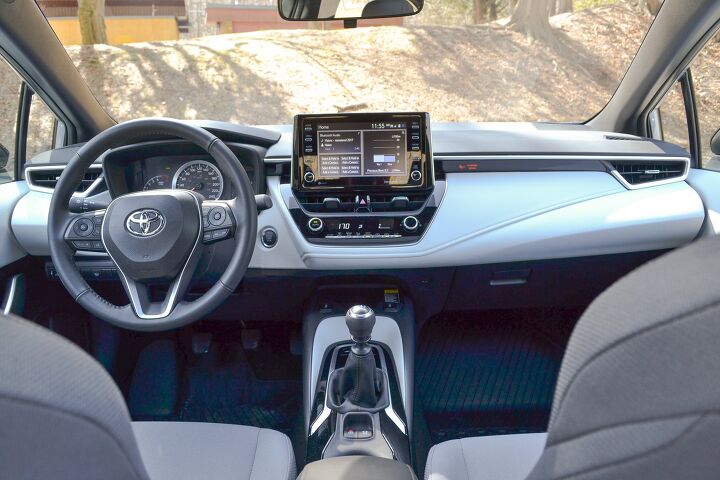































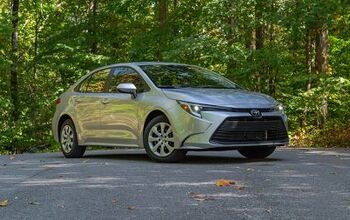



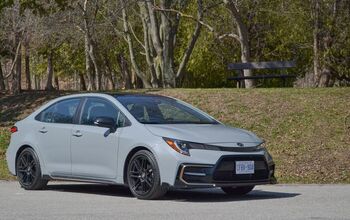

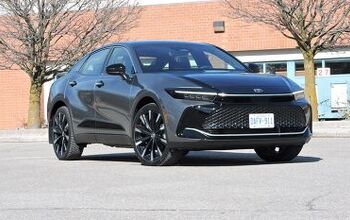
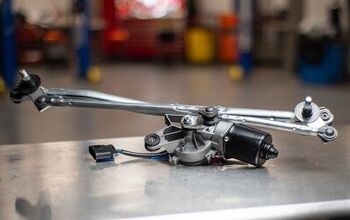
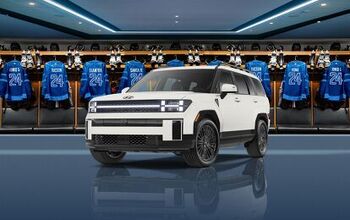




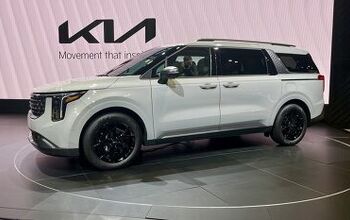
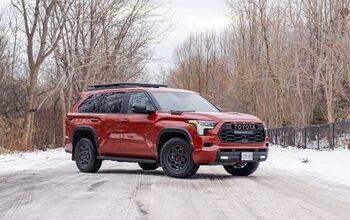
Comments
Join the conversation